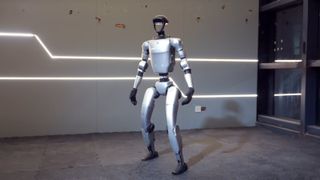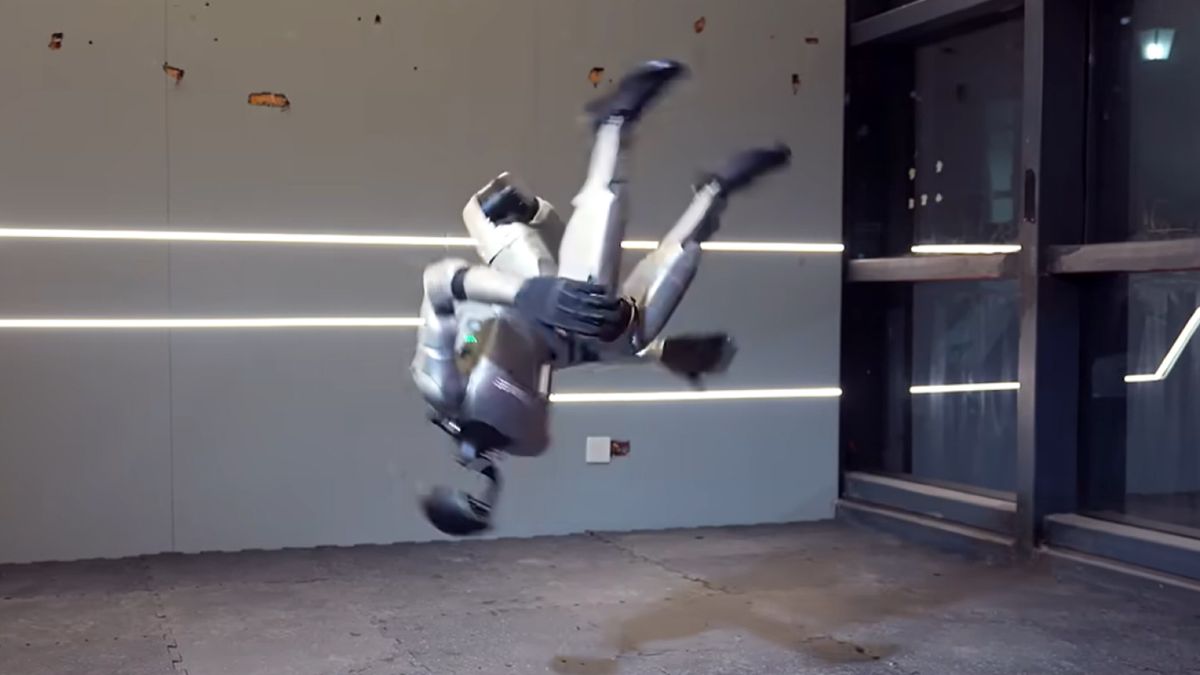Watch On
Scientists just showcased a humanoid robot performing a complicated side flip.
The company that makes the robot, Unitree, posted a video to Youtube showcasing its acrobatics. In the video, the silver-grey G1 crouches slightly, then launches up before rotating sideways through the air.
The robot catches itself primarily with its left leg and stabilizes almost immediately as the other foot makes contact with the floor. As impressive as it is at full speed, it’s even more mesmerizing in slow motion, particularly the ease with which the robot seems to balance and right itself after landing.
Last year, the same model mastered a backflip. To teach G1 its new trick, the company mainly upgraded the artificial intelligence (AI) algorithm it used to make the software faster and more responsive, Unitree representatives told Live Science.
“The side flip was performed under reinforcement learning training,” they added.
Related: Watch bipedal robots running in a more human-like way than ever thanks to major vision upgrade
Reinforcement learning is a mainstay technique used to teach robots how to navigate and interact with the physical world. This is the same technology that robotics company Figure has used to train its Figure 02 robots to move in a more humanlike way.

A robotic acrobat
The G1 can do more than acrobatics; during a martial arts demonstration, it disarmed a baton-wielding opponent. After a series of feints with its hands, the bot executed a spinning kick that sent the baton flying from its opponent’s hands.
Like its human counterparts, the robot’s lightweight, compact form helps it perform acrobatic moves with ease.
The G1 stands at just over 4.3 feet (1.3 meters) in height and weighs only 77 pounds (35 pounds) G1 also sports a 3D light detecting and ranging (LIDAR) and depth camera, which gives it a 360-degree view of its environment. Perhaps most importantly, it incorporates 23 degrees of freedom, a measure of the number of joints or axes of movement available to the bot.
The G1 can also walk and run at up to 2 meters per second (4.5 miles per hour or 7.2 kilometers per hour).
The company envisions robots like G1 or its successors doing everything from helping out with chores at home to performing industrial operations to assisting with hazardous rescue missions, the Unitree representative said.
